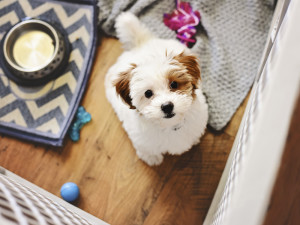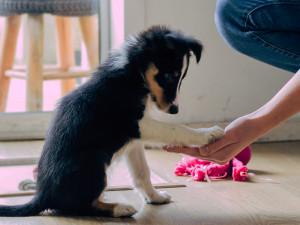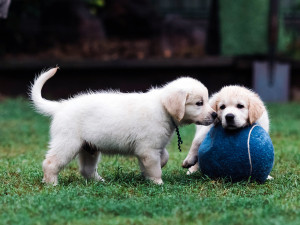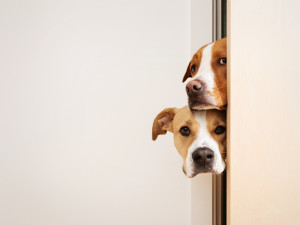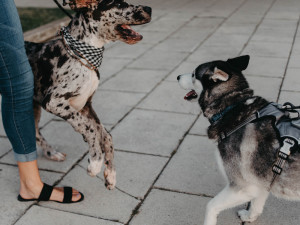How to Prepare Your Pup For Daycare and Dog Walkers
Set your pup up for success
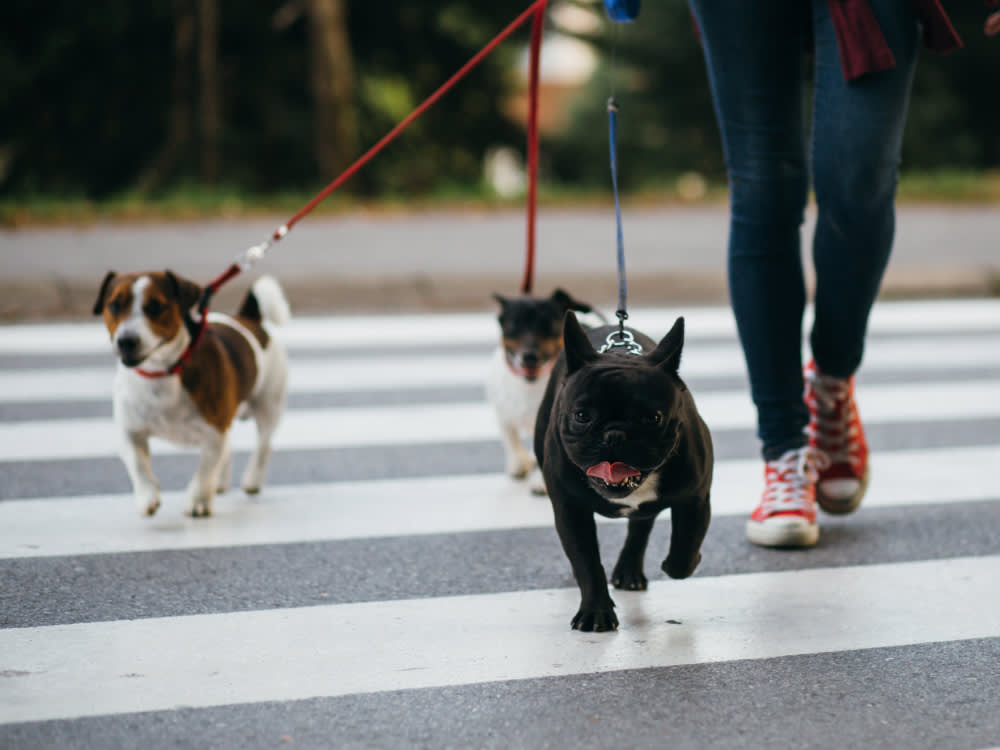
Share Article
Whether you have a new pup or you’re in a new area of town, trusting your dog in the hands of other humans can feel daunting – for both of you. But planning ahead greatly increases the likelihood that your dog and the new people spending time with them will have a great experience. It’s a great gift to your dog, too; it’s scary being the new kid. Below are a few steps you can take to make sure that you and your pup are ready for daycare and dog walkers.
How to prepare for doggy daycare
1. Socialise your pup
To enjoy doggy daycare, a dog must be used to playing with other dogs, both individually and in groups. If your pup is a social butterfly who wants to play with every dog they meet and enjoys play sessions even when multiple dogs are involved, they will probably find daycare a positive experience. If they are not experienced in multi-dog play, it’s wise to give them opportunities to play in a group settingopens in a new tab, starting with small groups and moving on to larger groups, assuming they enjoy the experience.

littleKin™ is Kinship’s home just for puppy and kitten parents. Bop over to check out expert advice, new pet tools, and special deals—all curated for your newest family member.
opens in a new tab2. Work on recall
Work on your dog’s recallopens in a new tab so they will come when a daycare staff member calls them; this is important because they may need to call your pup away from potentially problematic situations. Dogs with better recalls can be afforded more freedom. I also recommend teaching them to sit when they greet people so the staff members enjoy their interactions with your dog. Good training will endear your pup to the people at the daycare.
3. Crate train your dog
Teach your dog to be comfortable in a crateopens in a new tab if the daycare facility uses them. Many daycares have dogs spend some time playing in groups and some time on breaks, resting in crates. If your pup is used to a crate already, being placed in one will be easy.
4. Try a meet-and-greet
Before your dog attends doggy daycare without you, familiarise them with the actual facility. Pop in for a quick meet-and-greet with the staff and a walk around so the sights, sounds and smells are not a shock to them the first time you leave them there. When you do take your dog there for their first day, only leave them for an hour or so, even if you have to pay for the whole day. It’s far better to leave them wanting more than for them to become overwhelmed and exhausted by being active – and awake, quite frankly – for so long. If that experience is a good one and your dog seems happy (based on what you observe and what the staff tells you), the next step is for them to spend a whole day there.
5. Understand your dog’s needs
Keep in mind that not every dog enjoys doggy daycare – and that’s OK. Some dogs find it overwhelming – more like a chaotic ball pit at McDonald’s than a party. Other dogs exhibit such high levels of arousal that they are incapable of being their best selves among all the excitement. Dogs can sometimes be trained to handle the situation better, but often, if they’re scared or get too revved up, they may simply not be good candidates for spending all day with a large group of dogs. If this proves to be the case with your dog, understand that it’s not a failing on their part; it’s all about the dog and their particular personality and needs.
How to prepare for a dog walking service
1. Accustom your pup to walking gear
To prepare your dog to be walked by a professional dog walker, make sure they are accustomed to the gear the daycare uses. It’s important that they’re walked using a familiar, safe and comfortable lead (and collar or harness) that also works for the dog walker.
2. Teach them good walking manners
Dog walkers generally appreciate it if pups have been taught to remain calm while the harness is put on and/or their lead is being attached, whether that means a dog sits or simply stands still. If your dog has a tendency to pull, teach them to walk nicely on a leadopens in a new tab, which will make it more likely that they will have positive experiences on their outings together.
3. Help your dog get comfortable with strangers
Finally, it’s important to make sure that your dog will be comfortable with a dog walker entering your home. Many dogs are happy when anybody comes over at any time. If this describes your dog, great! If that’s not the case and you feel your dog may be uncomfortable with a strangeropens in a new tab walking in when they’re home alone, set up situations in which people come over and toss treats or toys to help your dog feel happy about visitors. If you’re concerned that your dog might act aggressively to a visitor or be really nervous about them, consult with a canine behaviourist who can help you with this.
Not every dog is a good match for a dog walker. If your dog is fearful of strangers or highly reactive to other dogs, consider contacting a professional behaviourist or trainer who is qualified to address these issues. They’ll be able to help improve the situation and let you know if and when your dog is ready to go on walks with a dog walker.

Karen B. London, PhD, CAAB, CPDT-KA
Karen B. London, Ph.D., is a Certified Applied Animal Behaviorist and Certified Professional Dog Trainer who specializes in working with dogs with serious behavioral issues, including aggression, and has also trained other animals including cats, birds, snakes, and insects. She writes the animal column for the Arizona Daily Sun and is an Adjunct Professor in the Department of Biological Sciences at Northern Arizona University. She is the author of six books about training and behavior, including her most recent, Treat Everyone Like a Dog: How a Dog Trainer’s World View Can Improve Your Lifeopens in a new tab.
Related articles
![Border Collie puppy shaking owner's hand]() opens in a new tab
opens in a new tabThe Go-To Training Schedule For Your Puppy
Your puppy training schedule, from eight weeks to six months. Let’s do this
![Two Golden Retriever puppies playing with a large blue tennis ball outside in the grass]() opens in a new tab
opens in a new tabWhat to Expect At Puppy Socialisation Classes
A dog behaviourist schools us on why puppy classes are more about socialising than getting straight As
![Two fearful adolescent dogs peeking through a slightly open door]() opens in a new tab
opens in a new tabDoes Your Dog Have Juvenile Onset Shyness?
Turns out, the teenage years aren’t just tough for humans – they can be rough on dogs, too
![Great Dane puppy and Husky meeting on leash out side.]() opens in a new tab
opens in a new tabUnderstanding Reactivity and Aggression in Dogs: Two Very Different Things
Apparently even experts have a hard time defining these terms

